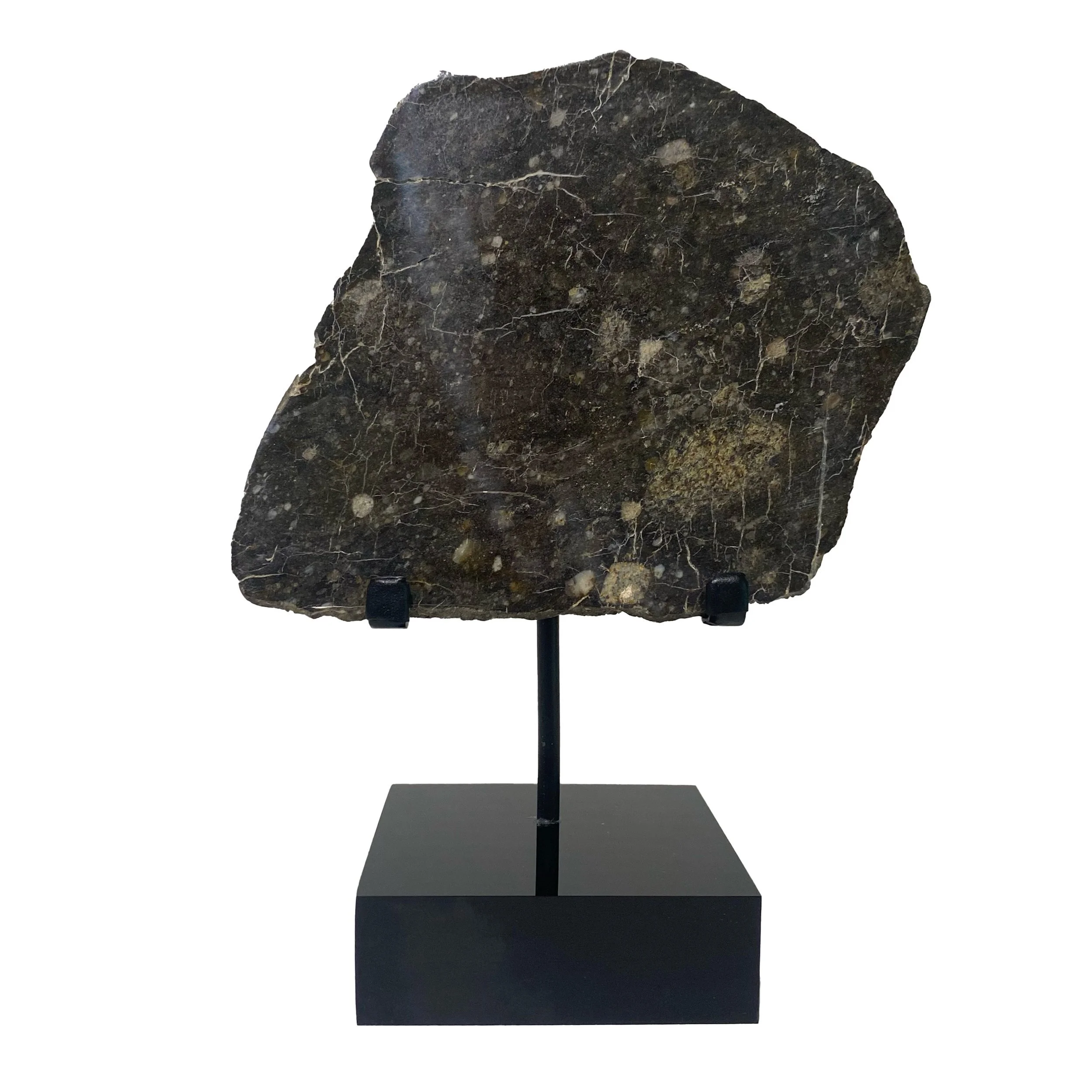Lunar Meteorites and their journey to Earth
Lunar meteorites (lunaites) unique circumstances for entry into the atmosphere and their feldspathic composition, make them one of the rarest substances on Earth. Only 0.7% of all meteorites found on Earth contain lunar material, with a total mass of approximately 1026 kg as of December 2022. Due to elemental testing, scientists have found lunar meteorites to be the only group of meteorites for which the source body can been identified unequivocally.
Due to the Moon having no atmosphere, impacts to its surface are common. Asteroid or comet impacts can cause fragments of ‘lunar rocks’ to be launched off the Moon’s surface at >2.4 km/s (lunar escape velocity) and start their journey to Earth. Before landing on the planet’s surface, the material has to survive the intense heat of impact.
Another important factor in the rarity of lunar material is the frequency of impacts. There are approximately 5 impacts per million years large enough to eject lunar meteorites, however, these impacts can craters as small as 450 metres in diameter (around a quarter of a mile).
The first lunar meteorite was discovered in Antarctica in November 1979 called ‘Yamato 791197’ however its lunar origin was not confirmed until later. Most lunar meteorites have been found in the Sahara Desert of Northern Africa and in the desert of Oman, almost exclusively by local people and experienced meteorite hunters.
Lunar Slice, NWA15629, 8.5 x 6 x 0.2 cm
Lunaites are often mistaken for sedimentary or volcaniclastic rock, however they have two distinct features that help differentiate from other rocks. Firstly, lunar meteorites have a distinctive ‘fusion crust’, where a melted exterior occurs during the passage through Earth’s atmosphere. They also contain carbon-14, something scientists test for the presence of when authenticating.
As the moon has a very thin atmosphere, the rocks on its surface are exposed to high levels of cosmic radiation. The cosmic rays contain so much energy that they cause nuclear reactions in the meteoroids that change one nuclide (isotope) into another. Some of those nuclides produced are radioactive by as soon as they fall to Earth, production stops because the Earth’s atmosphere absorbs nearly all the cosmic rays.
First coming to auction in 1997, lunaites often surpass estimates all over the world. Notably, in the 2021 '“Deep Impact” Christies auction, Tisserlitine 001 sold for $525,000 smashing its $250,000-300,000 estimate. In the same auction, lunar sphere NWA 12691 sold for 20x its estimate at $500,000.
In recent auction results, at Sotheyby’s recent natural history collection a NWA lunar meteorite sold for 4,826 USD. (about 3820 GBP) Our lunar meteorite of similar size is currently being sold at 2,200 GBP and is displayed below:
Discover rare lunar material, meteorites and natural history pieces at Extraordinary Objects Gallery, 14 Green Street, Cambridge








